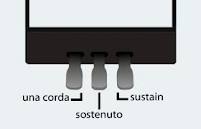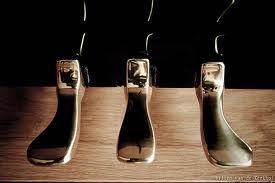
As you likely already know, a piano has two standard pedals under the keyboard – the una corda (also called the soft pedal) and the sustaining pedal. Some American made pianos have a third, middle pedal called the sostenuto (also referred to as the bass sustaining pedal), and this pedal is very rarely used. Generally the pedals of a piano are brass plated for both look and durability.
The soft pedal causes the hammer rail to move forward halfway to the strings, and thus the hammers have further to travel. This results in a softer sound. Depressing the full sustaining pedal will move dampers away 
Next time you take time to review a piano, take time to try out the pedals to get an idea of how each affects the notes you play. If the pedals are weak, the grand piano may not be worth its full value. When you’re making this sort of investment, it is important that you get your money’s worth.
Have you used all three pedals when playing? What sorts of arrangements have you noticed necessitate the use of the middle pedal?


